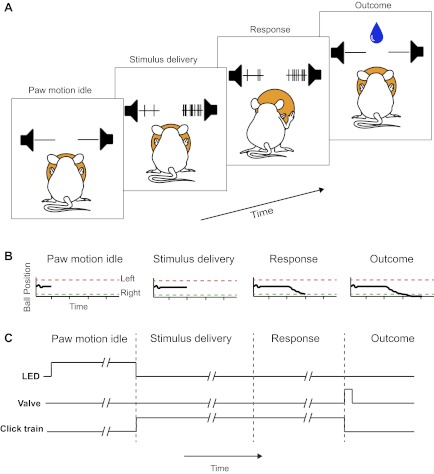Fig. 2.

A 2-alternative forced-choice task for head-fixed mice. A: trial stages. 1) Paw motion idle: a mouse must cease paw motion for 1 s to initiate a trial. 2) Stimulus delivery: the mouse listens to 2 random click streams and discriminates the faster clicking side. 3) Response: the mouse rotates the trackball with its paws in the chosen direction until a response threshold is crossed. The click train was not terminated until a choice was registered, allowing ongoing clicks to inform paw movement. 4) Outcome: the mouse was rewarded with a water droplet if it responded correctly or punished with a 5-s time-out delay if it responded incorrectly. B: time course of ball position record. In each trial, a fixed threshold was set at ±26 mm of lateral paw movement (∼50° about the ball axis) such that ball rotation past threshold in the correct direction will register a correct response. C: illustrated time course of trial-start LED, water valve, and the auditory stimulus.
